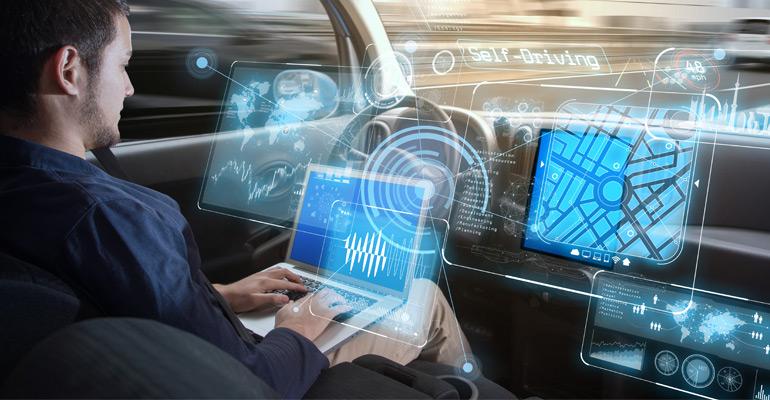Most public discussion of self-driving or autonomous vehicles has focused primarily on engineering, logistics and technical feasibility. We also hear a lot about timelines and risk-benefit analyses.
But those questions have largely been answered. Self-driving vehicles soon will be on the open road – and the open market. Industry professionals now must focus on what once seemed like an afterthought: the customer experience.
With self-driving technologies transitioning from research into applied science and engineering, it’s time for this feasible technology to be wrapped in a desirable customer experience, yielding viable business models.
The success of mobility businesses from Silicon Valley to Detroit depends on the enthusiastic adoption of this entirely new transportation paradigm, which is why industry professionals should be thinking hard about the implications and opportunities of a new customer-experience frontier.
Whether it’s technology partners or their own in-house practices and perspectives, automakers looking to develop and maximize emerging revenue streams should be focusing on:
Conveniences and considerations
The self-driving user experience is partly about capitalizing on conveniences that come with not having to physically drive the vehicle. But it’s also about psychology. The experience of being a passenger means relinquishing control – something not everyone will embrace. Consequently, vehicle manufacturers are working on driving “modes,” giving riders some level of general input into driving styles and risk tolerances.
Technology and testing
As the reality of driverless vehicles approaches, it’s important to build something that feels comfortable and is a delight to ride in.
That can’t happen in a vacuum: feedback is essential. Consumers are very specific about their preferences, which can be difficult to predict from an engineering standpoint.
Automakers and their partners need built-in flexibility in their production systems. With near-constant testing ongoing, engineering and product teams need access to feedback from a large and diverse set of consumers to improve feedback quality and minimize the risk of feedback loops.
Continuity and usability
Automakers intuitively understand the value of brand identity. Cars never have been just about getting from Point A to Point B. A cohesive and fully realized user experience – including how it makes riders feel – becomes more important with self-driving cars. Consequently, design teams should have a unified customer experience in mind when developing everything from powertrains and external design elements to in-vehicle consumer/tech interfaces.
The most compelling experiences are developed by those who converge on customer value, integrate work effectively and accelerate timelines by minimizing interdependencies between teams.
Full-service autonomous vehicle startups like May Mobility have an implicit advantage, as they carry less organizational debt. Wholly owned startups like Ford’s AV LLC also will help larger players collaborate faster in areas of higher uncertainty compared to their core business.
Priorities and partners
It’s critical to empower software-development teams that understand the current paradigm shift and possess a deep understanding of the unique autonomous technology stack and market characteristics. The best product teams/partnerships deliver:
- Speed to value
We no longer live in a marketplace where you can afford to wait years – or even months – to take products to market. Today, prototypes need to hit the market in weeks for testing. Validated learning through external feedback is invaluable.
With disruptive technology, big ideas come with a high degree of implicit risk and uncertainty. Consequently, it’s essential to determine early on if you’re on the right track – and quickly double down or shift direction when an assumption is invalidated.
- Speed to pivot
Going to market faster and more frequently means you’re learning more from consumers. The best teams process feedback and change direction quickly and effectively. Automakers should value teams that organize digital assets to be modular and capable of shifting direction quickly.
- Speed to scale
As you identify technology solutions and high-traction ideas, your team will need to scale by orders of magnitude to quickly deliver value to customers and gain market share. That scaling process needs to happen quickly but strategically, enabling you to stay customer-centric and nimble throughout.
Brave New World
The automotive industry’s relationship to high-tech innovation has experienced ups and downs. With autonomous vehicles poised to reshape the industry landscape, automakers should be rethinking almost everything, including funding, hiring and incentives.
 The goal is to bring a disruptive, Silicon Valley mindset to Detroit. In an industry that’s seen decades of incremental innovation, embracing disruptive breakthroughs and the radical implementation of cutting-edge technology will be challenging.
The goal is to bring a disruptive, Silicon Valley mindset to Detroit. In an industry that’s seen decades of incremental innovation, embracing disruptive breakthroughs and the radical implementation of cutting-edge technology will be challenging.
Automakers need to lean in to uncertainty, boldly seizing the opportunity to be pioneers, and to no longer optimize for predictability in an emerging mobility ecosystem. Ultimately, it’s about making uncertainty work for you by leading customers to exciting new places. With the market undergoing a sweeping shift, now is the time to define the future.
Automakers who can adopt that mindset and effectively collaborate within that ecosystem will find themselves prepared to thrive in a changing world.
Ashok Sivanand (pictured above, left) is co-founder and CEO of Integral, a product consulting company focused on consumer-grade experiences for connected and autonomous vehicles, shared mobility and IoT.




